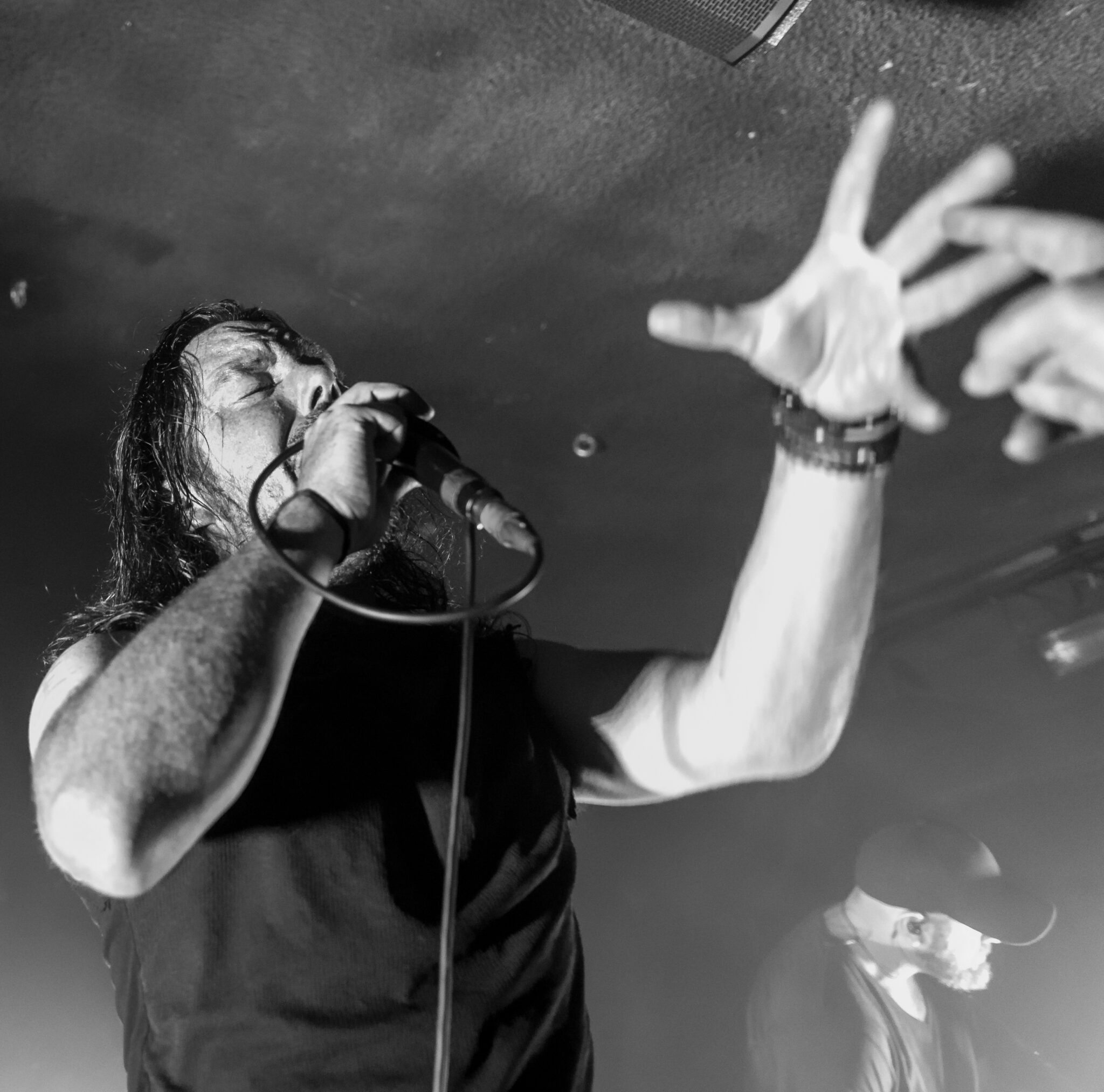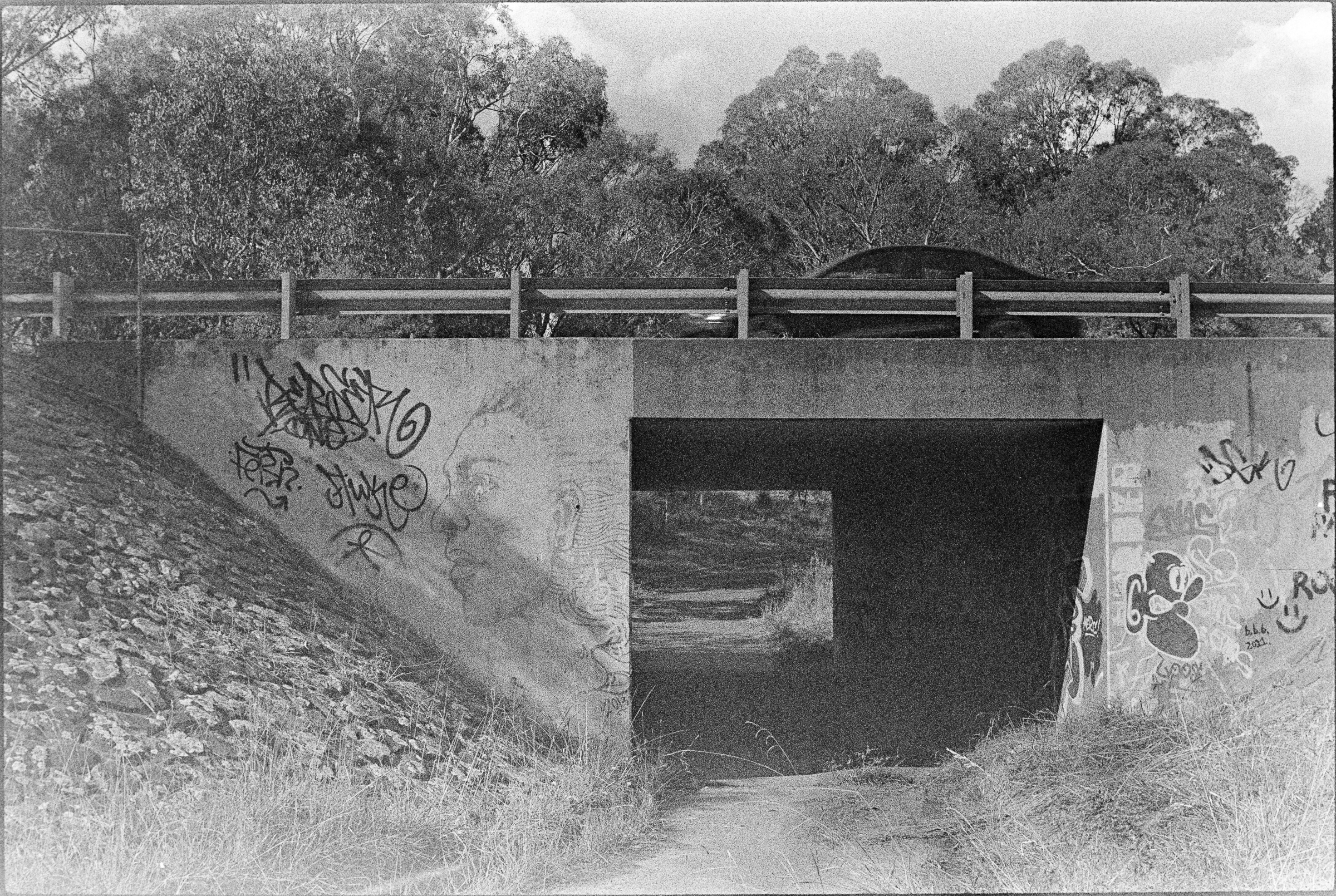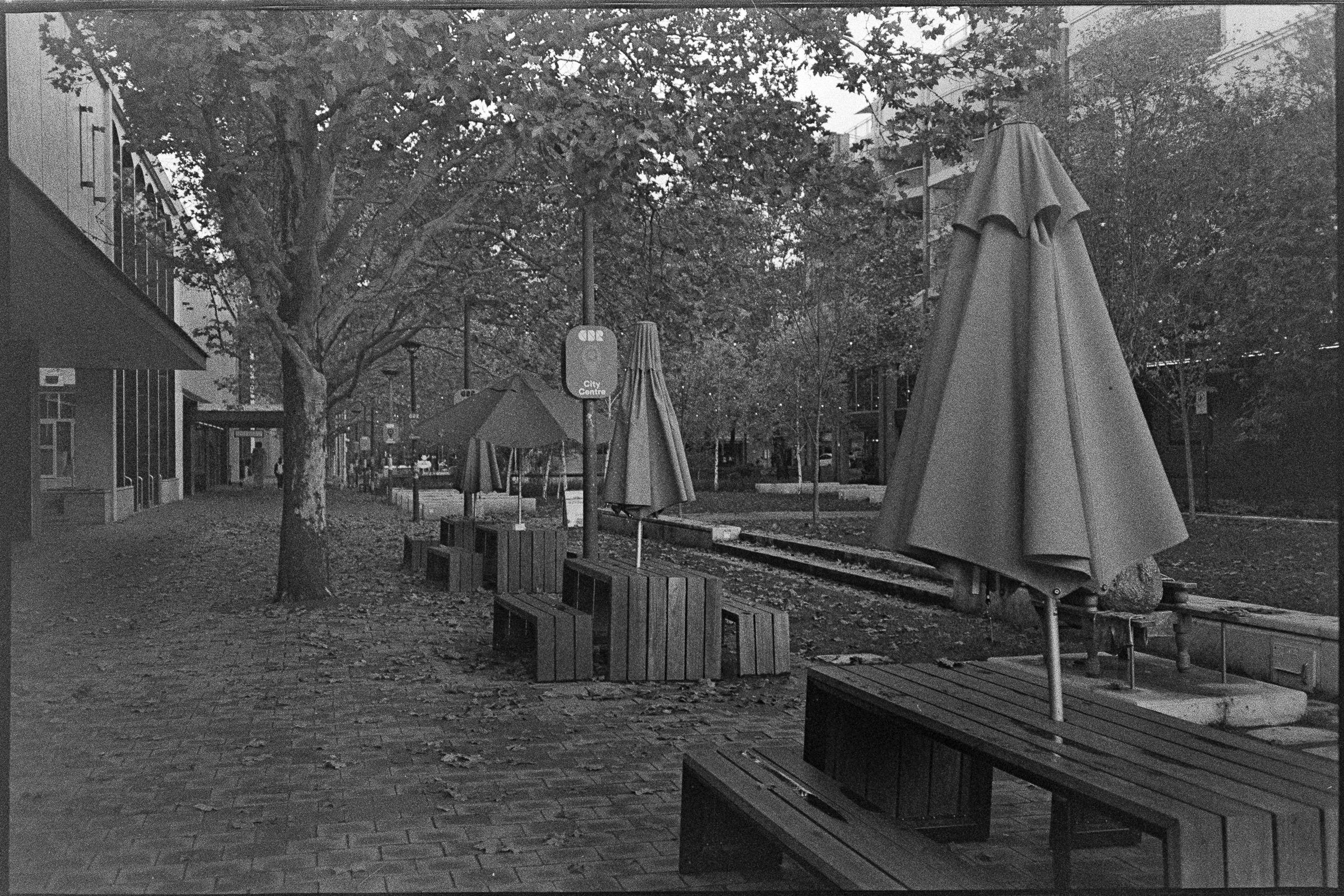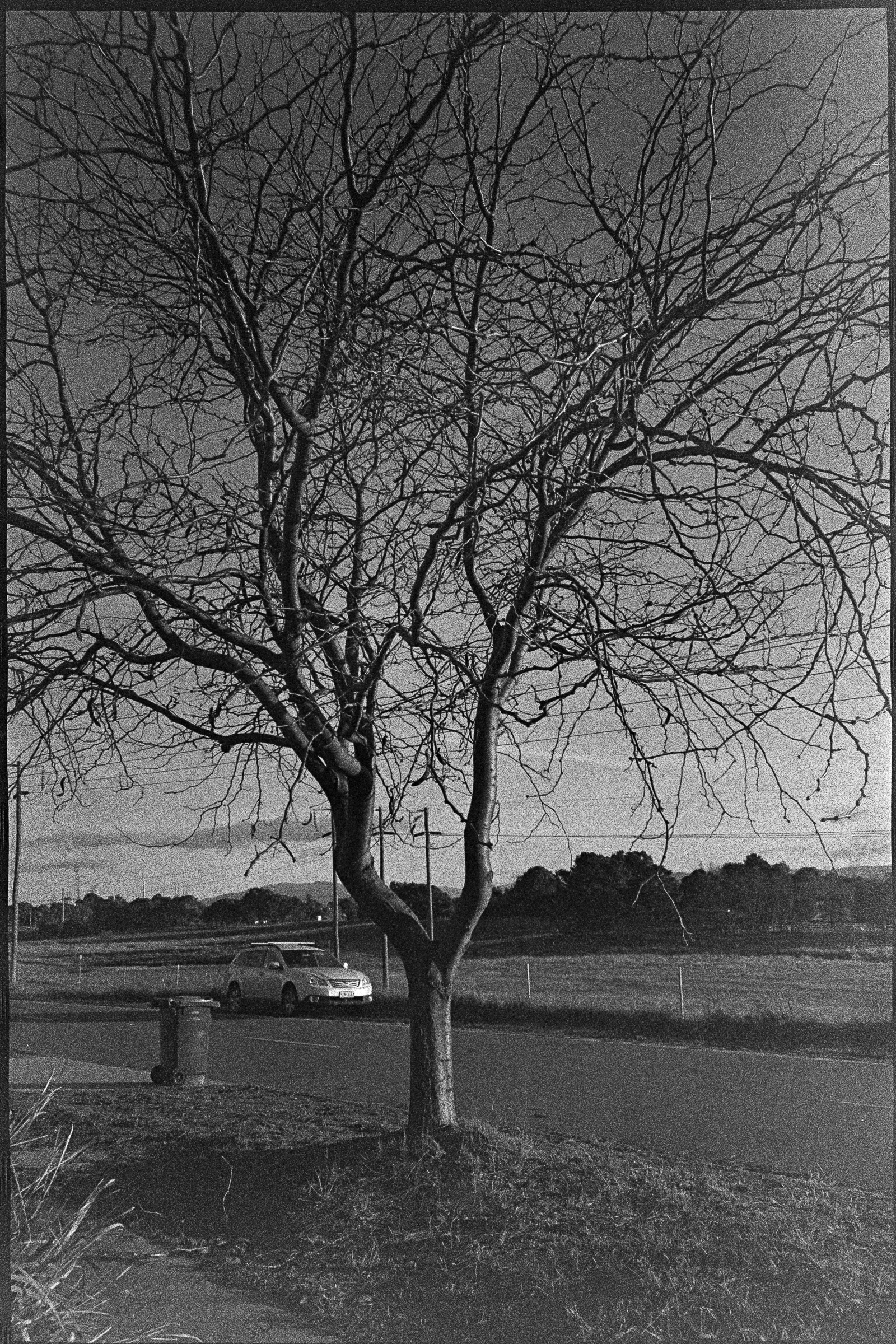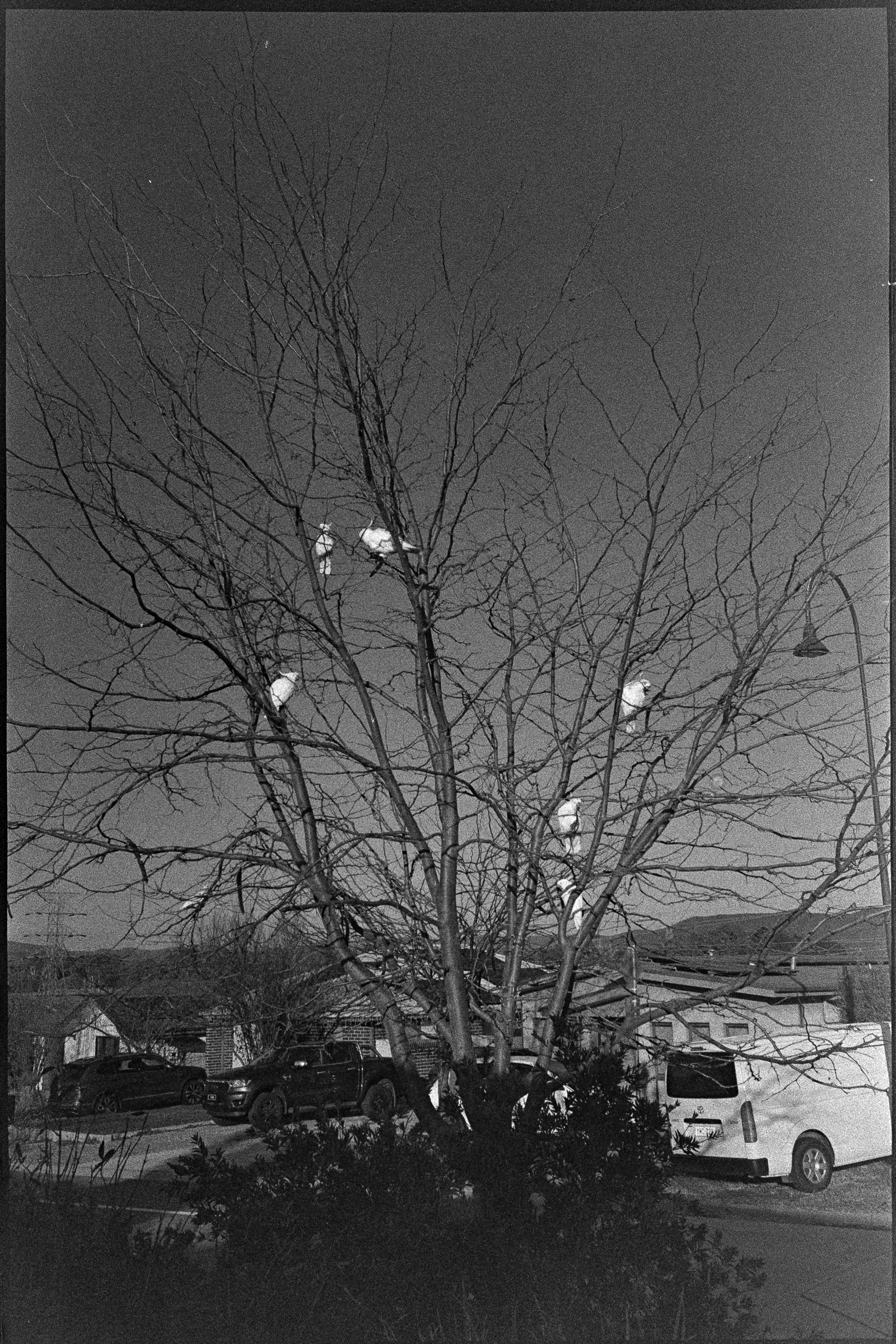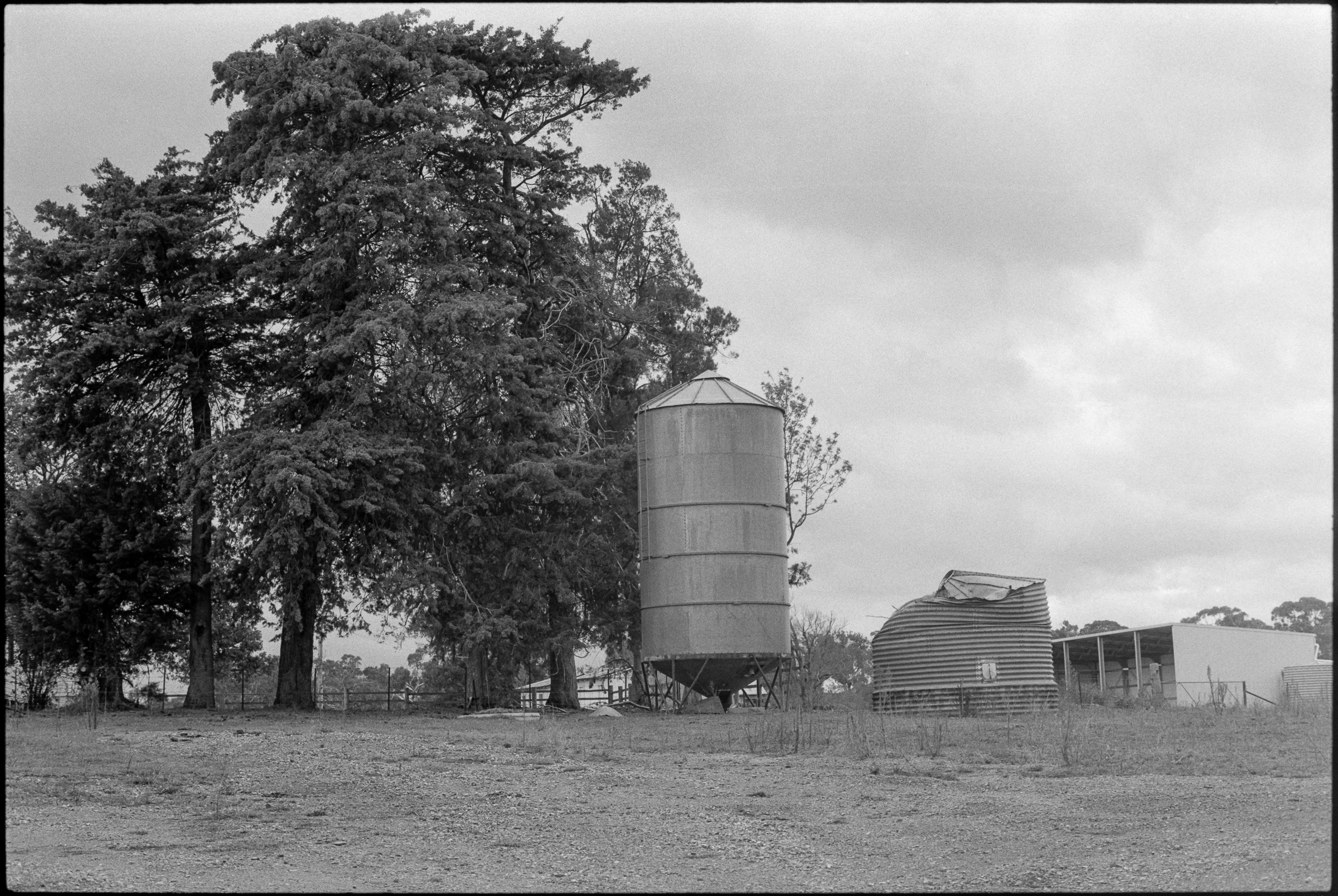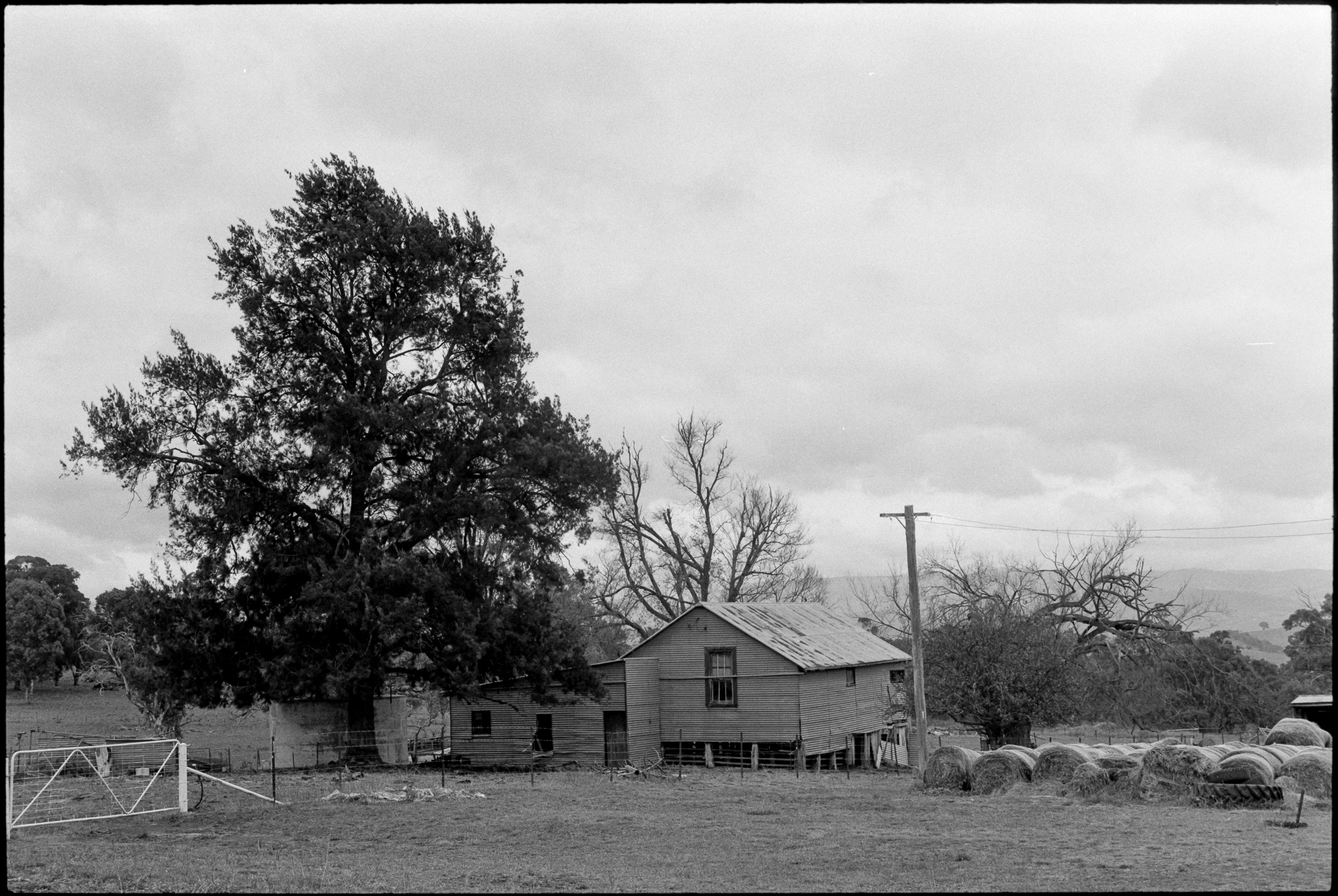Adventures in Black and White Photography
I have used black and white photography in the past, mainly to cover really bad lighting at a tiny concert at a pub. The kind of lighting that seems to hate camera sensors, or the kind of lighting where there is none and all your photos are a noisy mess and you just have to do something to deal with the noise.
 Pentax K5 - what noisy horror is the lack of colour hiding? We’ll never know…
Pentax K5 - what noisy horror is the lack of colour hiding? We’ll never know…
I also did black and white photography back in high school because everyone did black and white photography in high school - makes it easier if you have orthochromatic film or paper and you can leave the red light on.
Black and white photography can be very very different to colour photography. Removing colour shifts the focus to composition and contrast. The use of colour to help identify or highlight a subject is gone. It does mean subjects can disappear, even of they are right in front of you.
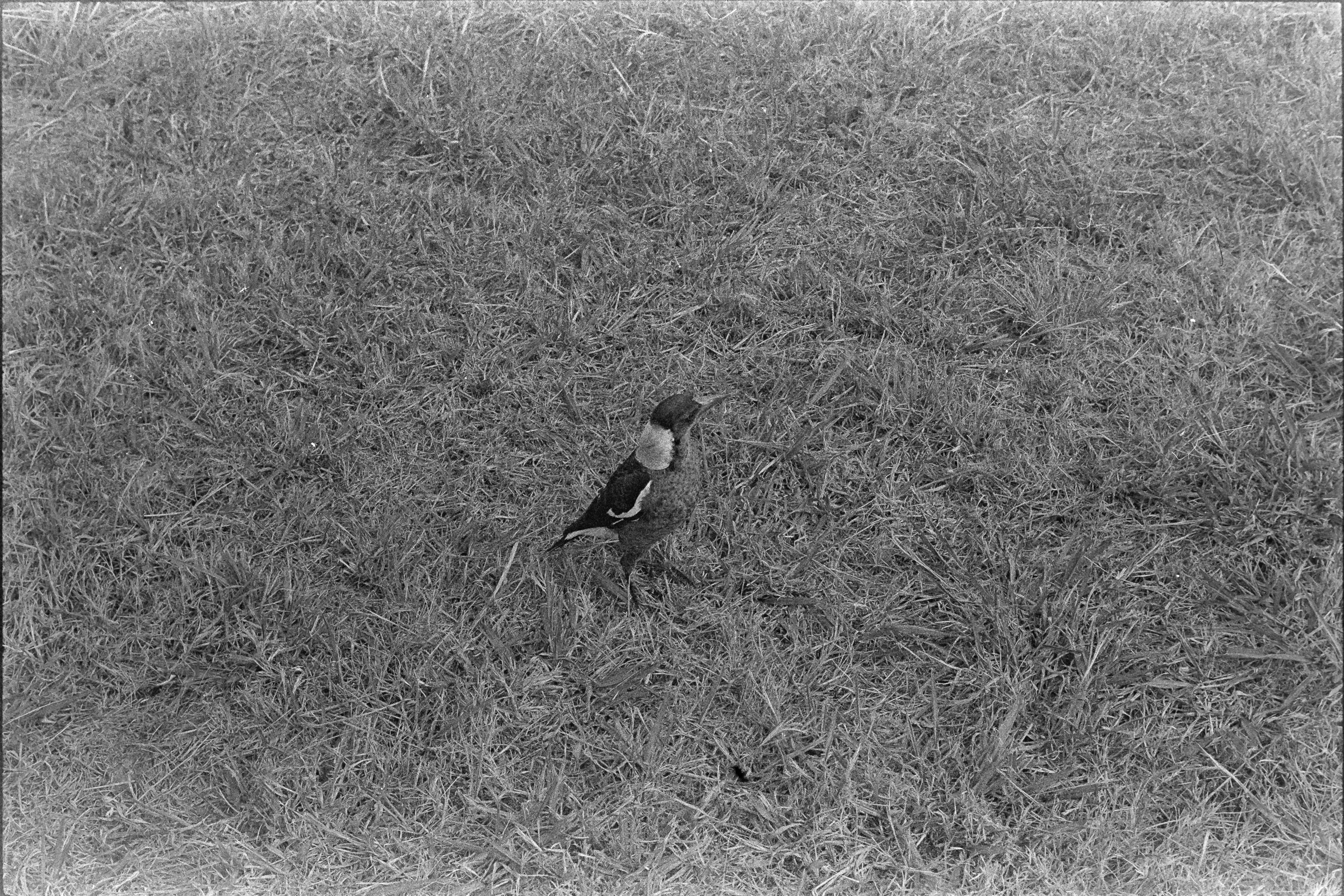 Magpie on some grass - Olympus OM-10 - Lomography Berlin Kino 400
Magpie on some grass - Olympus OM-10 - Lomography Berlin Kino 400
When I ordered a daylight tank for processing film at home it came with a few rolls of Lomography Berlin Kino 400 film (Side note - I do NOT recommend the Lomo daylight tank - its a genius idea, but both rolls of films I tried to put through it got gummed up and when I cut the film thinking it was all in the spiral there was still half a roll in the canister. Good thing it was just a couple of Lomography rolls and I didn’t really like the outcomes anyway.)
Anyway, I figured if I was going to keep speed-running this current hyper-focus I should give black and white photography a real shot, so I put a roll of the Berlin Kino 400 film through my Olympus OM-10. I wasn’t thrilled with the outcomes, partly the nature of the film stock, partly because I stuffed up the processing (I think the chemicals were a little too cold, and my agitation technique left something to be desired).
Olympus OM-10 - Lomography Berlin Kino 400
The film stock is very grainy, overly grainy, distractingly grainy. The film base is almost foggy. And because I stuffed up the processing the negatives somehow lacked contrast while being both over and underexposed at the same time - I am thinking this film stock does not have a wide dynamic range at all. At this point, wasn’t loving it. But, as a way to test an eBay find, I put another roll of it through a point-and-shoot with very low expectations.
Pentax PC35AF - Lomography Berlin Kino 400
Aside from under-exposing quite a few images the 100 Yen camera held up OK, and focus seemed to be on point. But the grainy was still grainy, even if I didn’t completely stuff up the developing this time.
Pentax PC35AF - Lomography Berlin Kino 400
At this point I figured the free rolls that came with the developing tank might have been enough for me.
However, the algorithms that be had other ideas.
Harmon (who make the back and white film under the Ilford brand) released a new budget film stock in their Kentmere range, Kentmere Pan 200. YouTube was all over it, my Instagram feed was all over it. It was everywhere, and I was enjoying a lot of the images photographers were making with it.
Maybe I should give it a shot!
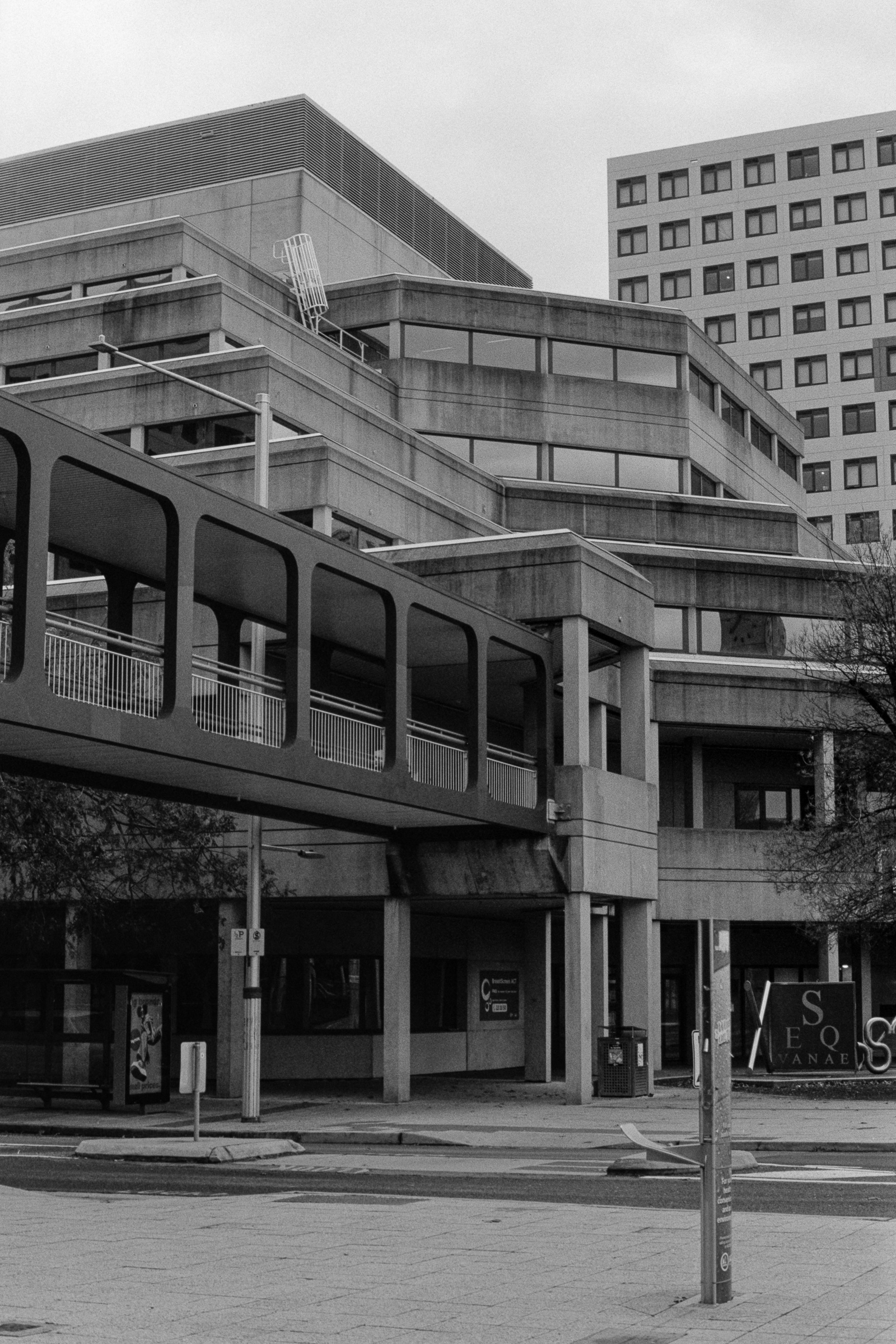 Moore St Health Building - Olympus OM-10 - Kentmere Pan 200
Moore St Health Building - Olympus OM-10 - Kentmere Pan 200
That is a little more like it. That was a little closer to my expectations.
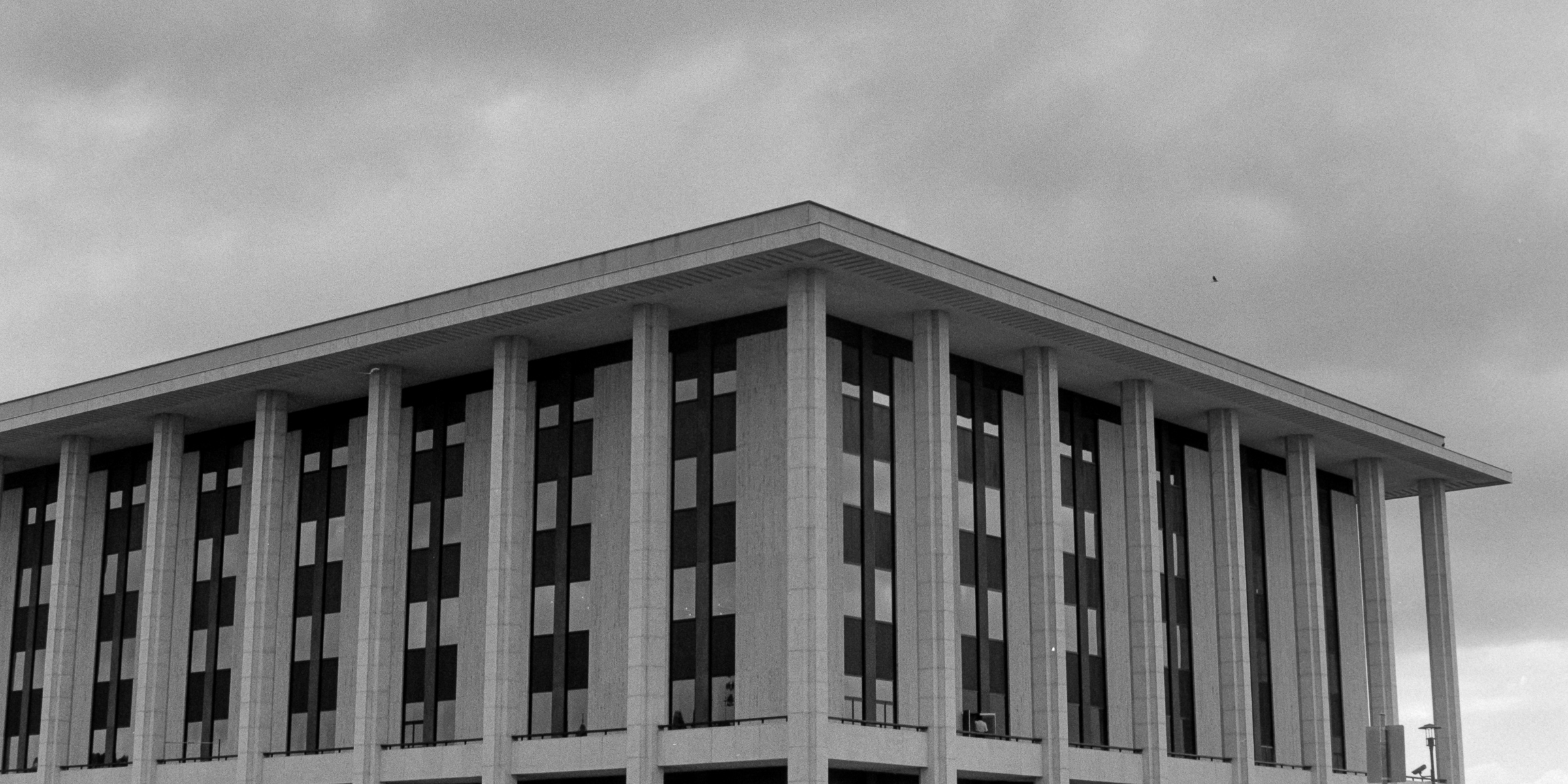 National Library of Australia - Olympus OM-10 - Kentmere Pan 200
National Library of Australia - Olympus OM-10 - Kentmere Pan 200
These photos aren’t amazing, not that they have to be, but I think I can start to see where black and white might work.
Olympus OM-10 - Kentmere Pan 200
So what have I learnt from this?
I do like black and white photography (or maybe, I can like black and white photography?). It has it’s place. I am learning where it might work, and where it doesn’t. As taking a photos on film doesn’t magically bestow awesomeness on a bad photo, black and white doesn’t fix a bad colour photo or make it interesting or better.
In the same way that I am not giving up digital photography anytime soon, I am not going to stop making colour photos anytime soon, and I still much prefer colour.
Don’t stick incredibly cheap plastic colour filters in front of your lens. The idea of red or yellow filters to darken the sky and add contrast to black and white film photos is well established. However, very cheap very plastic filters tend to muddy everything up, and add bad flare.
The 4th or 8th hand 75-150 zoom lens I have for the Olympus is soft, and might also be back focusing, and looks even worse with a bad coloured filter.
THe film stocks from Lomography with “character” generally aren’t for me. I think I learnt this with the single roll of Metropolis I shot, but it was reinforced with the bundled rolls of Berlin Kino 400.
And as always, I miss horizon correction and a level in the viewfinder on my film cameras.
If I get to try some portraiture sometime shooting both colour and black for people would be interesting, even if there is good lighting and I don’t need to hide the digital glitches caused by stage lights.
